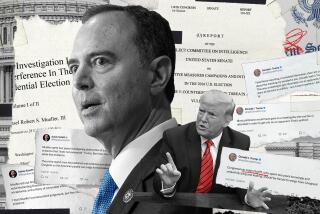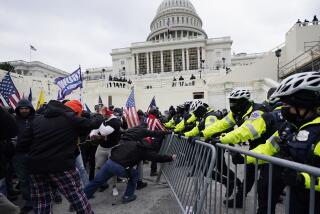What did we learn from reading Robert Muellerâs actual report?
The secrecy around the final report from special counsel Robert S. Mueller III has finally been lifted, at least most of it.
Some information was redacted by the Justice Department, but much of the 448-page report became public on Thursday. Hereâs what weâve learned.
Mueller ultimately determined that Justice Department policy prevented his office from seeking to indict a president for obstruction of justice, but he left the door wide open for Congress.
His report concludes that lawmakers have the power to investigate and potentially act upon the information compiled during the Russia investigation â suggesting impeachment.
Mueller rebutted legal arguments asserted by Trumpâs attorneys that a presidentâs exercise of executive power granted under the Constitution cannot constitute illegal obstruction. If done for âcorruptâ reasons, Mueller concluded, otherwise legitimate presidential acts, such as pardoning people or ending investigations, can be reviewed. And Congress has the authority to do it.
Weâve grown accustomed to the presidentâs tweets complaining of harassment and deriding the investigation as a âwitch hunt.â But President Trumpâs words here peel back the layers of braggadocio to reveal something else â fear.
âEveryone tells me if you get one of these independent counsels it ruins your presidency,â Trump told Sessions, according to the report. âIt takes years and years and I wonât be able to do anything. This is the worst thing that ever happened to me.â
Although Trump raged against the investigation, his fury often turned out to be impotent. The most notable example came in June 2017, when he demanded Don McGahn, then the White House counsel, get Deputy Atty. Gen. Rod Rosenstein to fire Mueller.
âMueller has to go,â McGahn recalled Trump saying. âCall me back when you do it.â
McGahn didnât want to carry out the order and packed up his office while preparing to resign. But the next time Trump and McGahn saw each other, the president didnât ask about the issue, letting it drop.
Trump has often bragged about having âone of the great memories of all time,â but it seemed to fail him when he was faced with questions from the special counselâs office. In written answers to questions, he repeatedly said he couldnât recall details.
At one point he wrote that he couldnât remember specifics on any conversations with Roger Stone, a longtime political advisor, over a five-month period during the campaign.
Trumpâs memory was particularly fuzzy around the time of the crucial meeting in Trump Tower in June 2016 between three top campaign aides â including his eldest son â and a Kremlin-linked lawyer from Moscow.
âThis was one of many busy months during a fast-paced campaign, as the primary season was ending and we were preparing for the general election campaign,â Trump wrote.
This is not the sort slogan you put on a baseball cap. In interviews with investigators, Michael Cohen said Trump saw dollar signs in his presidential campaign, mainly for the free publicity it would generate for the Trump Organization.
This continued throughout the year, as Trump returned again and again to his own properties. He announced his campaign in Trump Tower, hosted primary-night news conferences at Mar-a-Lago and drew press to his Washington, D.C., hotel for a ribbon-cutting.
âNever before has a presidential campaign looked so much like an infomercial,â Politico reported in 2016. Turns out, thatâs exactly what Trump had in mind.
More to Read
Sign up for Essential California
The most important California stories and recommendations in your inbox every morning.
You may occasionally receive promotional content from the Los Angeles Times.












